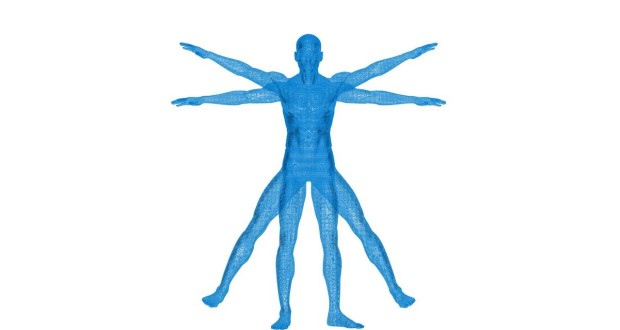There are some parts of the body that just don’t get the proper amount of respect and attention. Consider, for a moment, the endocrine system. Compared with the immune system, the endocrine system doesn’t spark a whole lot of interest. In fact, many people are completely unaware that this crucial component of the body even exists. Fortunately, learning about the endocrine system makes for quick and worthwhile reading.
The Cogs in the Machine
The relative anonymity of the endocrine system does not diminish its importance to your health. The reach of this collection of glands extends throughout the body, affecting every cell, organ and bodily function. By extension, several aspects of your health hinge on the performance of the endocrine system and its supplementary organs, including your metabolism, sexual functions and overall temperament.
The main components of the endocrine system are listed below, along with a brief description of each part’s significance:
Hypothalamus – The hypothalamus, a small cluster of cells located in the center of the brain, has a close working relationship with the pituitary gland. This pearl-sized body part manufactures neurohormones that regulate the body’s various functions, behaviors and emotions. The role that the hypothalamus plays in your daily life cannot be understated; among other things, this portion of the brain controls your body temperature, your desire for food and beverages, sleep cycles, sex drive, heart rate and blood pressure.
Pituitary Gland – As alluded to in the previous paragraph, the pituitary gland often works in tandem with the hypothalamus to keep your body running smoothly. The hypothalamus sends a constant stream of messages to the pituitary gland, alerting it when various hormone levels in the body become depleted (hormones are simply chemicals that transmit messages between glands and cells). The pituitary gland then produces the needed hormones and ships them to the appropriate areas of the body.
Thyroid – The thyroid is a butterfly-shaped gland in the lower front part of your neck. It surrounds the neck’s windpipe, and is positioned just below the Adam’s apple. Like the hypothalamus and pituitary gland, the thyroid functions as a hormone factory, producing special “T3” and “T4” hormones that greatly influence your metabolism, digestive system and heart rate.
Parathyroids – The parathryoids are a set of four tiny glands attached to the front of the thyroid. These glands produce the (appropriately named) parathyroid hormone, a chemical that ensures that your bloodstream contains a healthy amount of calcium.
Adrenal Glands – Located further down inside the body are the adrenal glands, which are attached to the top of each kidney. The adrenal gland can be divided into two distinct areas: the adrenal medulla and adrenal cortex. The adrenal medulla produces its own brand of hormones called catecholamines. There is one type of catecholamine you’ve probably heard of before – adrenaline. Adrenaline enables your body to perform “fight or flight” responses, providing you with extra strength and energy to either flee or confront external threats.
In contrast, the outer cortex is tasked with producing corticosteroids, hormones that perform the following tasks in the body:
- Maintain a healthy balance between salt and water
- Support the body’s metabolic and immune systems
- Assist the body with its sexual/reproductive functions
Perhaps the most important corticosteroid is cortisol, another chemical that helps enable the body to perform its “fight or flight” reactions. When released from the cortex, cortisol temporarily boosts energy, memory and the body’s resistance to pain. While such effects might be necessary for short-term crises and confrontations, an overabundance of cortisol within the body (triggered by a secession of traumatic events) can be harmful to your health.
Pineal gland – Located adjacent to the hypothalamus pituitary gland is the pineal gland, yet another small but significant contributor to your endocrine system. The chief export of the pineal gland is melatonin, a hormone that determines when you fall asleep and wake up.
Reproductive Glands – Okay, no snickering. The reproductive glands are often referred to as the gonads. One common misconception is that only males have gonads; in reality, the term “gonads” encompasses both male and female reproductive organs. For men, the reproductive organs are known as the testes, which are located inside the scrotum. Testes supply the male body with hormones called androgens, the most famous of which is probably testosterone. Testosterone is the driving force behind a man’s sex drive and sperm production.
The gonads in the fairer sex are found in the pelvis. A woman’s ovaries have been assigned the dual roles of producing eggs and dispensing the hormones estrogen and progesterone. Estrogen is essential for the development of female sexual organs, and allows fertilized eggs to develop into fetuses. Progesterone is used by the female body to strengthen the lining of the uterus, enabling it to receive and cultivate eggs that have been fertilized.
Pancreas – Though many people associated the pancreas with the digestive process, this organ also plays an integral role in the routine functions of the endocrine system. The pancreas manufactures two essential hormones, one which is well-known (insulin) and one that, well, isn’t (glucagon). Together, insulin and glucagon carefully monitor and manage the amount of sugar (also known as glucose) in the bloodstream, keeping the body’s supply of this energy source at a steady level.
 Natural Knowledge 24/7 Educate yourself with nutrition, health and fitness knowledge.
Natural Knowledge 24/7 Educate yourself with nutrition, health and fitness knowledge.






